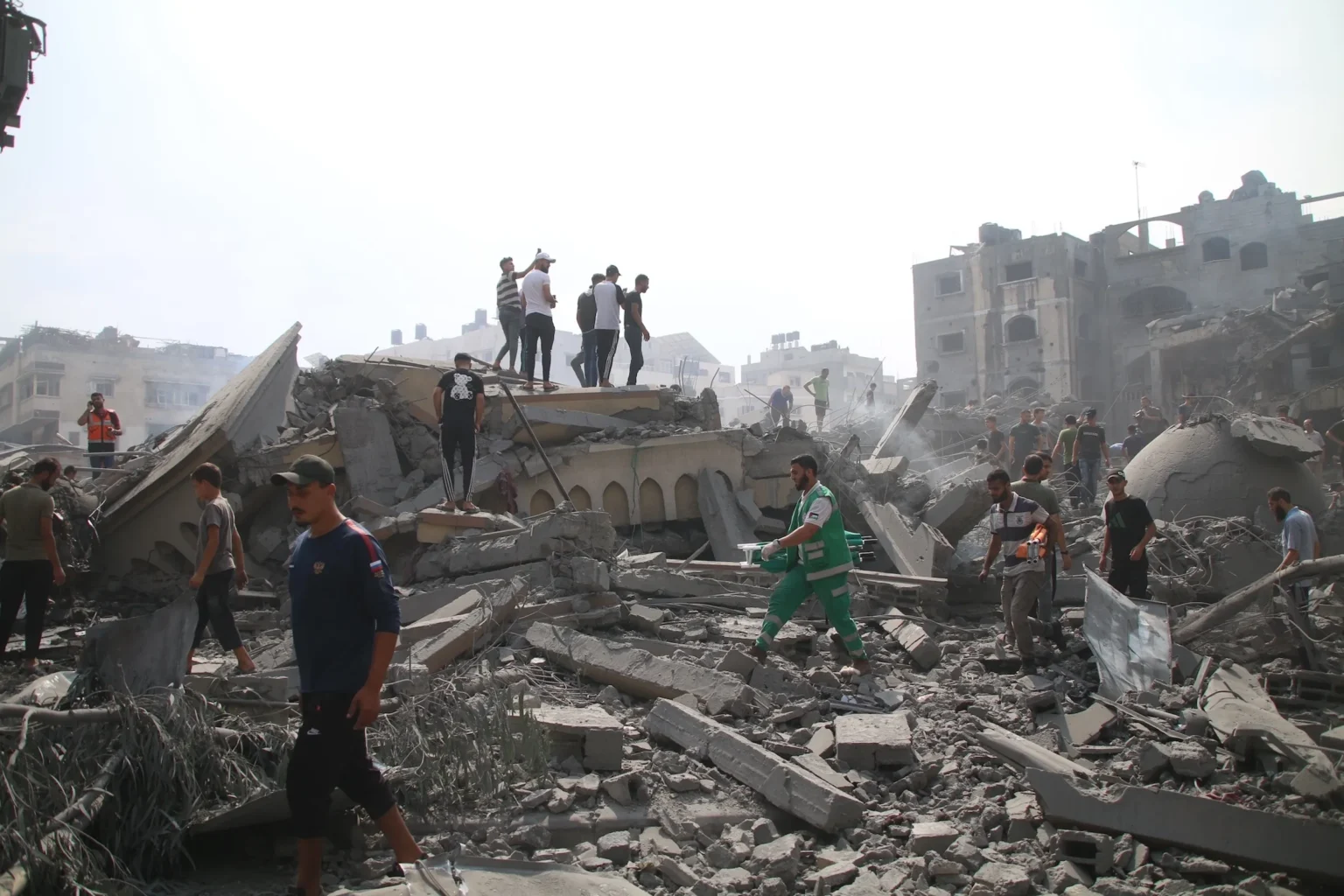Over the weekend, videos circulated on social media showing Israeli soldiers desecrating the Bani Saleh Mosque in Gaza and tearing copies of the Quran, intensifying concerns about Israel’s continued actions against Muslim religious sites and symbols in its ongoing conflict with Palestinians.
Hamas, the Palestinian resistance group defending Gaza, condemned the Israeli assault on Islam’s holy book and mosques, issuing a statement on Telegram: “We strongly condemn the actions of Zionist soldiers burning copies of the Quran during their raid and desecration of the Bani Saleh Mosque in northern Gaza. The burning of the Quran, the desecration, targeting, and destruction of mosques confirms the extremist nature of this entity and its soldiers, who are filled with hatred and criminality, and their fascist behavior towards everything related to the identity and sanctities of the nation.”
Previously, Hamas had called on UNESCO to protect religious heritage and historical buildings in Gaza, where Israel’s bombardment has reportedly claimed over 40,000 civilian lives, predominantly children and women.
Experts describe these Israeli attacks on historical sites as “cultural genocide,” viewing it as part of a broader “genocidal campaign” against Gaza’s population.
Recent drone footage has revealed an Israeli airstrike in December targeting the Grand Mosque of Gaza, one of the oldest Muslim places of worship, with a history spanning several centuries.
Historical Background
The Great Mosque of Gaza, often referred to as “the Beautiful Mosque” by the 14th-century Muslim traveler and writer Ibn Battuta, dates back to the 7th century AD when Muslims took control of Jerusalem and Palestine, including Gaza, from the Roman Empire, making them part of the Islamic caliphate.
According to Dotan Halevy, a historian and postdoctoral fellow at the Van Leer Institute, many residents of Gaza believe that “Israel is destroying everything beautiful” in the city, making it impossible for the population to find solace. As of now, Gaza authorities report that Israel has destroyed over 600 mosques and three churches, with more than 200 mosques partially damaged, in addition to the destruction of numerous heritage sites.
Targeting religious sites is considered a war crime under international humanitarian law, yet Israel has largely escaped accountability in the West for its actions.
Significant Religious Sites Targeted by Israel
The Grand Mosque of Gaza The Grand Mosque of Gaza, the oldest and largest Muslim place of worship in the city, has a rich history dating back to the time of the Philistines, the ancient rulers of Gaza and much of Palestine. Originally a Byzantine-era Christian church built on the site of a Philistine temple, it was transformed into a mosque following the Muslim conquest of Gaza and named the Great Omari Mosque after the second Rashidun Caliph, Omar, a companion of Prophet Muhammad.
The site has long been significant to modern Israeli leadership due to its connection to the ancient Philistines. Although the Philistines are not directly related to Palestinians, their name is etymologically linked to the word Palestine.
The story of Samson, an Israelite hero and adversary of the Philistines, who died in Gaza while bringing down the Philistine temple, resonates with the Zionist leadership. In a recent Haaretz article, Israeli scholar Omer Bartov suggested that the modern Israeli leadership’s actions in Gaza could be seen as echoing the story of Samson. This narrative has been invoked by Israeli leaders, including Moshe Dayan, since the 1950s to highlight the perceived threats from Gaza.
Church of Saint Porphyrius
The Church of Saint Porphyrius, Gaza’s oldest Christian worship site, has also been targeted by Israeli strikes at least twice since October 7, damaging parts of the building. The church has provided shelter for both Christian and Muslim Palestinians during Israel’s military operations in Gaza.
An Israeli attack in October hit two halls of the Greek Orthodox church, causing a building to collapse and killing over ten civilians. The incident sparked global condemnation, with the Greek Orthodox Patriarchate describing the attack as a “war crime that cannot be ignored” and calling for the international community to protect sanctuaries of refuge in Gaza, including hospitals, schools, and houses of worship.
The Church of Saint Porphyrius, named after the 5th-century bishop, was originally built around 425 AD, with its current structure dating back to the mid-12th century Crusader era. The church also houses the tomb of Saint Porphyrius in its northeastern corner.


